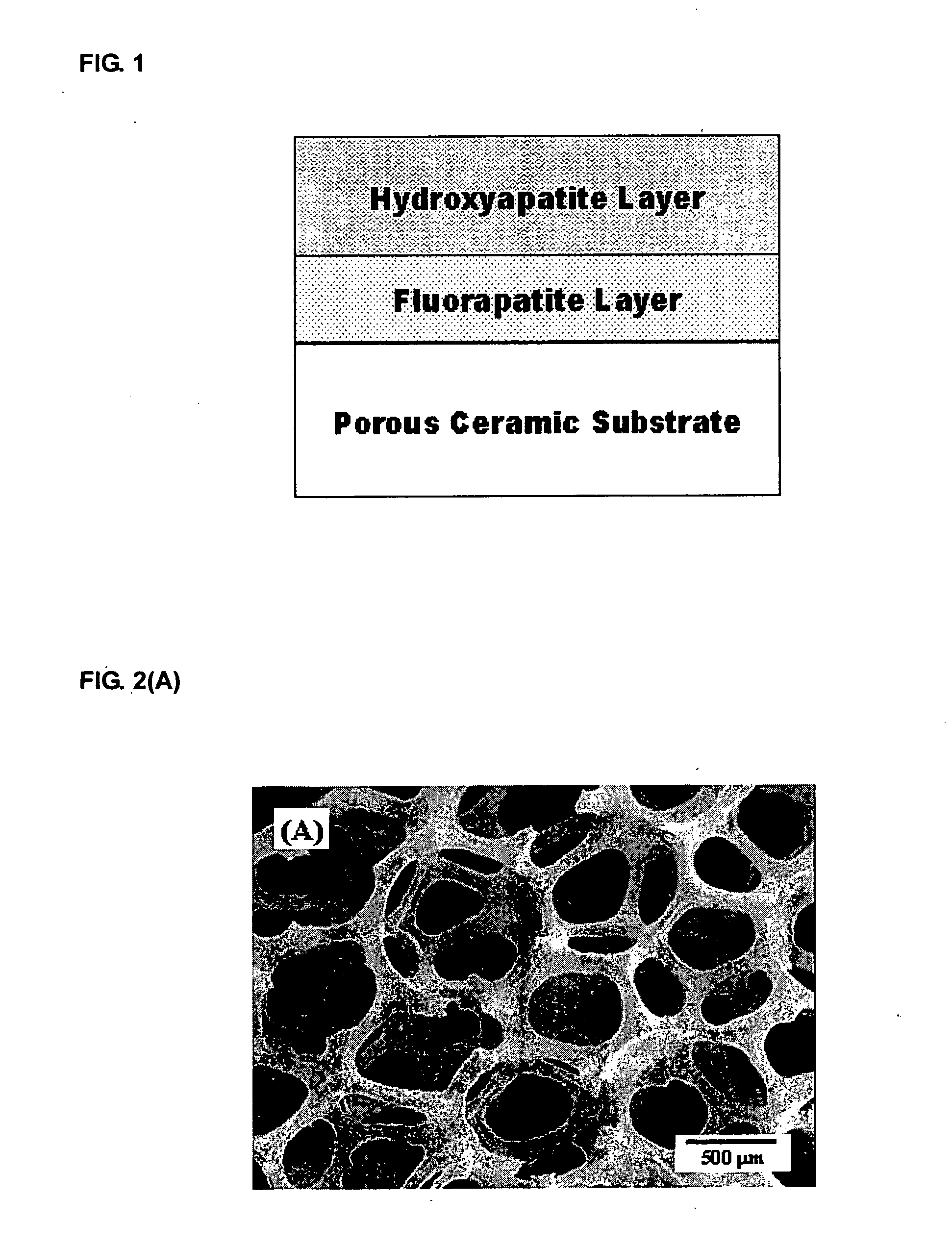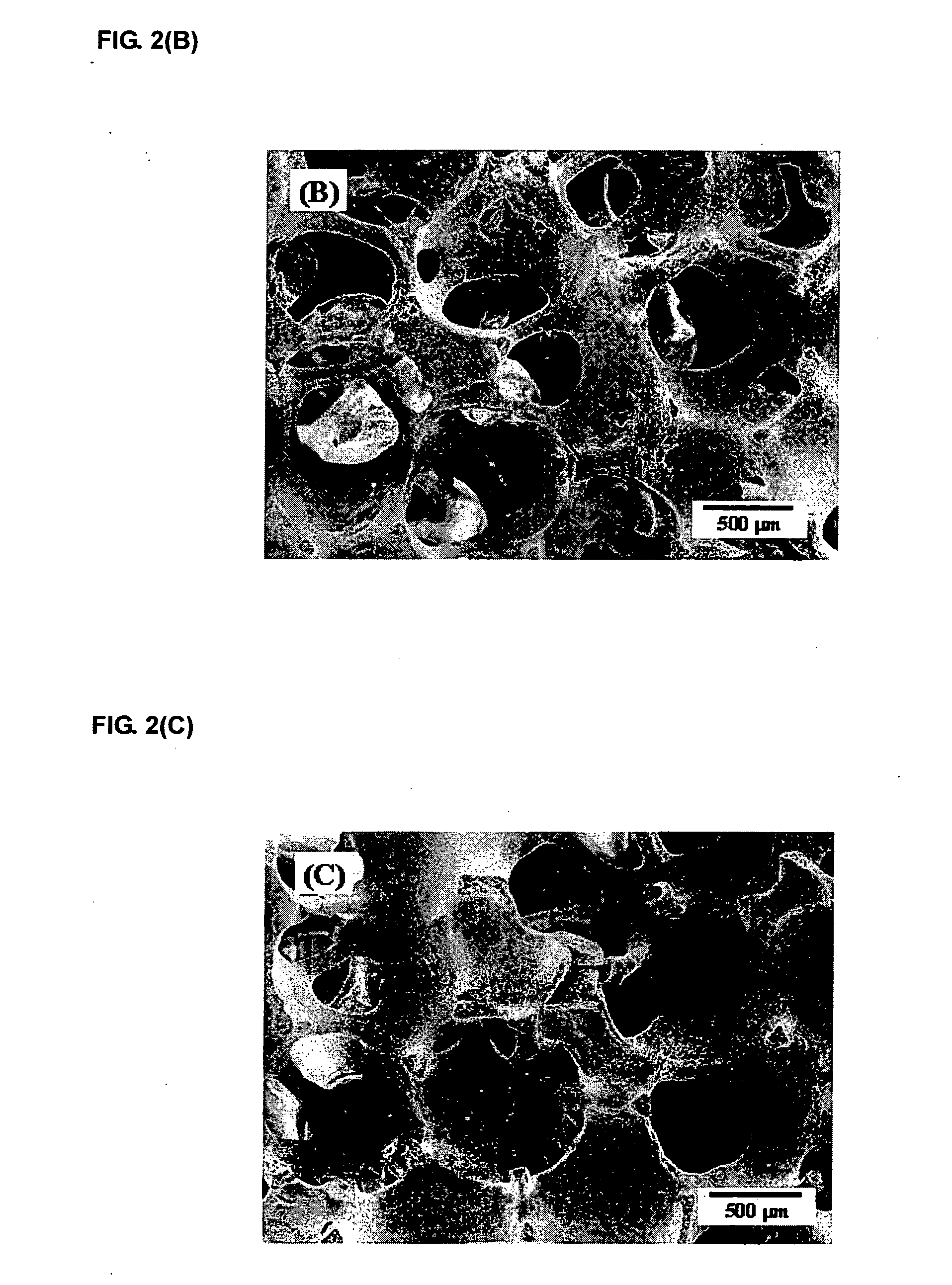Porous bioceramics for bone scaffold and method for manufacturing the same
a bioceramic and bone scaffold technology, applied in the direction of ceramicware, prosthesis, superimposed coating process, etc., can solve the problems of poor mechanical properties such as mechanical strength and fracture toughness, unsuitable for use as a material for hard tissues of human body requiring high mechanical strength or fracture toughness, and limited to parts not requiring high mechanical strength, etc., to achieve high mechanical properties
- Summary
- Abstract
- Description
- Claims
- Application Information
AI Technical Summary
Benefits of technology
Problems solved by technology
Method used
Image
Examples
examples
[0044] Fabrication of Porous Ceramic Substrate
[0045] As a starting material for the porous ceramic substrate, commercially available ZrO2 powder (3 mol % Y2O3, Cerac Inc., WI, USA) was used to prepare a slurry mixture. The powder of 100 g was stirred vigorously in 150 ml distilled water dispersed with a triethyl phosphate (TEP; (C2H5)3PO4, Aldrich, USA) of 6 g for 24 h. As a binder, polyvinylbutyl (PVB, Aldrich, USA) of 6 g was dissolved in another beaker, which was subsequently added to the slurry and stirred for an additional 24 h.
[0046] A polyurethane foam template (45 ppi, Customs Foam Systems Ltd, Canada) was cut to the appropriate dimensions for fabricating porous scaffolds. The prepared sponge was immersed in the slurry and subsequently blown with an air gun to disperse the slurry uniformly throughout the porous scaffolds without blocking the pores. The sponge was then dried at 80° C. for 10 min. These dipping-and-drying steps were repeated 4 times. The sponge was then oven...
PUM
| Property | Measurement | Unit |
|---|---|---|
| size | aaaaa | aaaaa |
| porosity | aaaaa | aaaaa |
| porosity | aaaaa | aaaaa |
Abstract
Description
Claims
Application Information
 Login to View More
Login to View More - R&D
- Intellectual Property
- Life Sciences
- Materials
- Tech Scout
- Unparalleled Data Quality
- Higher Quality Content
- 60% Fewer Hallucinations
Browse by: Latest US Patents, China's latest patents, Technical Efficacy Thesaurus, Application Domain, Technology Topic, Popular Technical Reports.
© 2025 PatSnap. All rights reserved.Legal|Privacy policy|Modern Slavery Act Transparency Statement|Sitemap|About US| Contact US: help@patsnap.com



